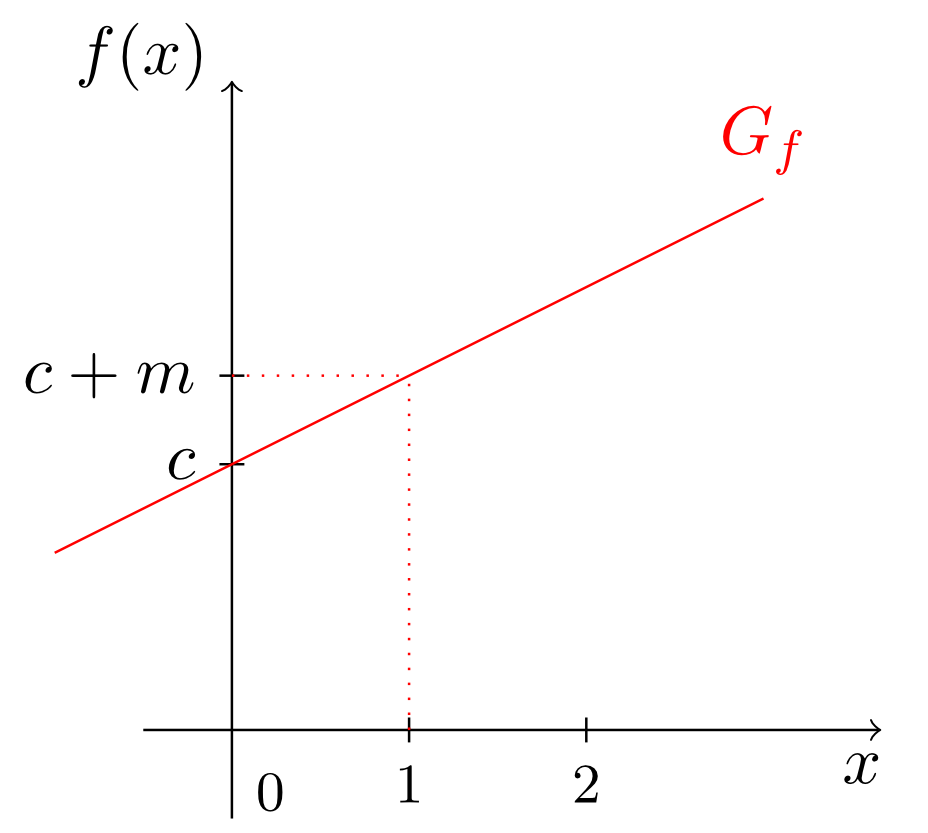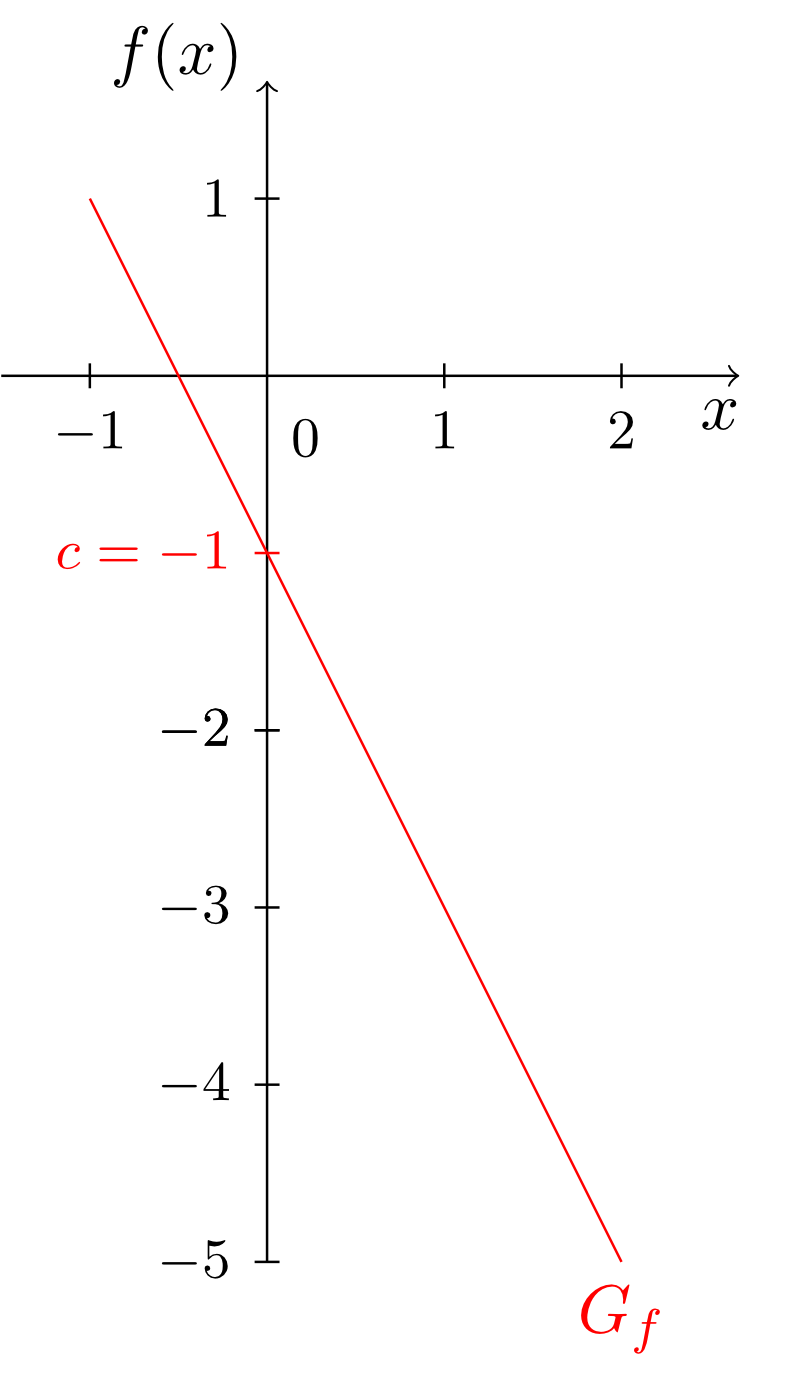Chapter 6 Elementary Functions
Section 6.2 Linear Functions and Polynomials6.2.4 Linear Affine Functions
Combining linear functions with constant functions results in so-called linear affine functions. These are the sum of a linear function and a constant function. Generally, without any specification for the slope () this is written as follows:

The graphs of linear affine functions are also called lines. For linear affine functions, the constant is still called slope, and the constant is called -intercept. The reason for this term is as follows: if the intersection point of the graph of the linear affine function with the vertical axis is considered, then this point has the distance from the origin (see figure above). So, for the linear affine function shown in the figure below

we have the slope and the -intercept . The -intercept is the value of the function at and hence given by
Exercise 6.2.4
Find the slope and the -intercept of the function
Exercise 6.2.5
Which functions are the linear affine functions that have slope , and which are the ones with -intercept ?
 Onlinebrückenkurs Mathematik
Onlinebrückenkurs Mathematik